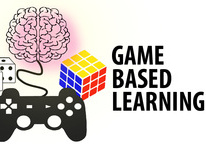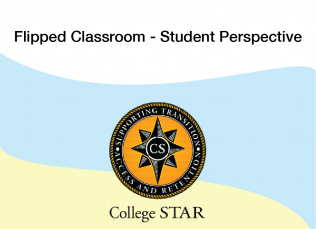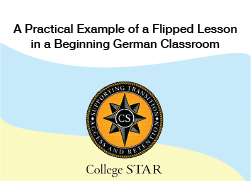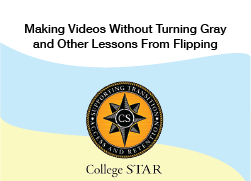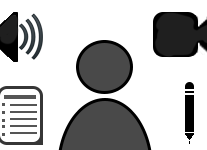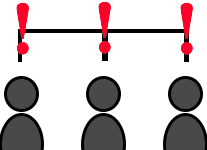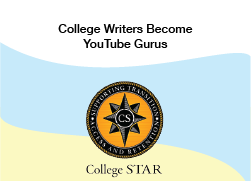Module Link
This resource was originally developed with resources from the College STAR grant. That grant has ended and the College STAR modules will now permanently reside at the East Carolina University Office for Faculty Excellence.
Module Introduction
Most students are required to read the same material, write the same tests, and complete the same assignments as all the other students. This traditional pedagogical strategy inherently disadvantages many students, which, in turn, also disengages many students. More than a century ago, Dewey (1916) argued such pedagogical strategies expect students to conform to the educational system, they afford students little freedom, and they ignore learners’ strengths, interests, and skills. An alternative approach provides students with options for reading materials and assessment tools that meet their individual needs and allow them to focus on their personal strengths, interests, and skills. This alternative pedagogical strategy is called “differentiated instruction” and is defined as the process of
“ensuring that what a student learns, how he/she learns it, and how the student demonstrates what he/she has learned is a match for that student’s readiness level, interests, and preferred mode of learning” (Tomlinson, 2004, p. 188).
A more nuanced definition is provided by Carol Tomlinson in the video provided in Figure 1. The relevance of this issue is illustrated by Biancarosa and Snow (2004, p. 8), who suggest that “as many as 70 percent of... [adolescents may] require differentiated instruction … targeted to their individual strengths and weaknesses”.
Based on seminal work by Tomlinson (1999, 2003), “differentiated instruction” has become widely adopted in practice. Over the past two decades, a substantial body of knowledge has been generated about the theory and practice of differentiating what or how a student learns. On the other hand, the theory and practice of differentiating how students demonstrate what they have learned has received considerably less attention. This scarcity of information on the theory and practice of “differentiated assessment” is surprising given Tomlinson’s (2004, p. 188) definition explicitly includes “how the student demonstrates” their knowledge. Therefore, this case study distinguishes between differentiated assessment and differentiated instruction as distinct, but related processes. Thus, differentiated assessment is defined as
the process of ensuring how a student demonstrates knowledge, ideas, and concepts matches their readiness level, their personal interests, and their preferred mode of action and expression.
Most pedagogical strategies allow the teacher to decide what, when, how, and where learning is to be assessed, including differentiated instruction and differentiated assessment. An alternative strategy would be to allow students to decide what, when, how, and where learning is to be assessed. Such a strategy would encourage students to have a “voice” in their learning (see Dewey, 1916) and “play an active role in the assessment process” (Francis, 2008, p. 547). This strategy may become increasingly necessary, as Francis (2008, p. 547) warns, because
… “the lecturer is increasingly seen as being fallible, and students are judged to be far more likely now than at any time previously to challenge methods of assessment and to expect greater input into the assessment process on their part.”
This looming challenge for the academy was recognized almost half a century ago by Friere (2005, p. 73), who warned that the education system emboldens students to conform with teacher demands and become passive participants in their learning.
Assessment empowerment allows students to become active participants in the assessment process. Assessment empowerment allows students to: (i) take control of the assessment of their learning; (ii) choose how they want to demonstrate knowledge, ideas, and concepts; and, (iii) allow them to actively focus on their personal strengths, interests, and skills. My accidental journey into the theory and practice of assessment empowerment began with ad hoc accommodations of students’ needs (e.g. new due dates, alternative test formats). Over my teaching career, I have also regularly allowed students to choose research topics of interest to them, provided choices on tests (e.g. answer three of five questions), and allowed students to choose due dates for tests and assignments. However, these choices may be better described as an expression of “critical democracy” rather than assessment empowerment.
My journey took an interesting turn in the fall of 2015. Students were permitted to choose any medium and means to communicate the results from their major research project (e.g. PowerPoint, poster, photo-essay, diorama, or interpretive dance). One particularly creative student used spoken word to poetically and passionately communicate a compelling, articulate, and well-informed story about the quality of drinking water on Indigenous reservations. This experience provided compelling evidence of the benefits from students playing an active role in the assessment of their learning. Since then, I have been expanding the choices in all my college classes, and especially for introductory (100 and 200-level) courses.
Support for this Module
Original development of this module was made possible by the College STAR (Supporting Transition Access and Retention) initiative. College STAR was a grant-funded project focused on partnering postsecondary educational professionals and students to learn ways for helping postsecondary campuses become more welcoming of students with learning and attention differences. Much of this work was made possible by generous funding from the Oak Foundation.
